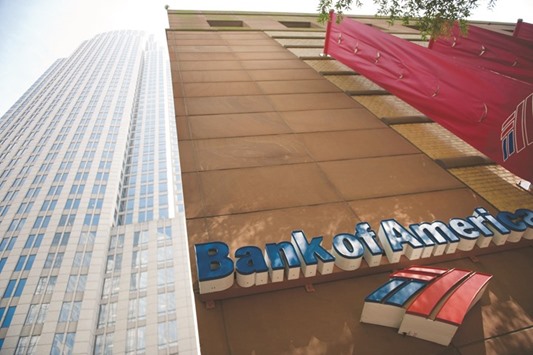The world’s biggest bond dealers are getting saddled with Treasuries they can’t seem to easily get rid of, adding to evidence of cracks in the $13.3tn market for US government debt.
The 22 primary dealers held more Treasuries last month than any time in the last two years, Federal Reserve Bank of New York data show. While at first glance that may suggest a bullish stance, the surge in holdings is more likely the result of investors including central banks dumping the debt on the firms, said JPMorgan Chase & Co strategist Jay Barry. Foreign official accounts sold a net $105bn of the securities in December and January, an unprecedented liquidation, Treasury Department data show.
Strategists say there are signs that the buildup of Treasuries held by dealers is having a ripple effect, mucking up the plumbing of the financial system. While the holdings show they did their job by soaking up the supply from central banks raising cash to support their currencies, it’s adding to questions about the resilience of the world’s most important market. The Treasury Department is already looking into whether the market isn’t operating as smoothly as it should.
“This was a lot of dealers doing what they are supposed to do - provide liquidity,” said Scott Buchta, head of fixed- income strategy at Brean Capital in New York. “But the liquidity providers right now are getting the short end of the stick. It’s harder for dealers to offload these securities because the market depth just isn’t there.”
Primary dealers’ stash of Treasuries reached as high as $121bn last month, the most since October 2013 and up from about $9bn in July of last year. They held $111bn as of March 9, almost double the average for the last five years.
As the world’s biggest bond dealers - including banks such as Bank of America Corp, Goldman Sachs Group and JPMorgan - struggled to get rid of the burgeoning pile of debt, the premium for the newest, easiest-to-trade Treasuries soared to the highest since 2011.
The firms’ efforts to hedge all the Treasuries collecting on their balance sheets also roiled the futures market and a crucial corner of the financial system where traders lend and borrow securities overnight.
All of this has been happening as the bond-trading business has been coming under pressure. Last year, the world’s biggest banks generated the lowest revenue from fixed-income products since 2008, according to research firm Coalition Development. Critics contend that regulations enacted since the financial crisis, such as increasing capital requirements and curtailing leverage, restrict dealers’ willingness to make markets.
Officials say the rules have made the financial system safer. The Treasury Department is conducting its first comprehensive review of the government-debt market’s structure since 1998. The review was prompted by a 12-minute plunge and rebound in yields on October 15, 2014. “Without question, the reforms adopted following the crisis have created a stronger, more resilient system,” Antonio Weiss, counsellor to Treasury secretary Jack Lew, said in prepared comments March 16 in Washington.
Dealers moved to minimise the risk of holding so many tough-to-unload securities by selling, or shorting, benchmark notes, said Barry of JPMorgan.
They had the biggest bearish position in the newest 30-year bonds since May in the week ended March 9, according to a Credit Agricole SA analysis of New York Fed data.
Part of the fallout was seen in the $1.6tn market for repurchase agreements, or repos, where Wall Street goes to exchange securities for overnight cash. The combination of dealer demand, a global government-debt rally and reduced auction sizes caused a shortage in the repo market for the securities needed to close short positions in 10- year debt.
Failures to deliver 10-year notes surged in the week ended March 9 to the most since at least 2013. For all Treasuries, failures reached the highest since the financial crisis, New York Fed data show.
Demand was so great for the benchmark 10-year note that its repo rate traded at about negative 3% for more than a week, before an auction of the debt settled March 15 and eased the shortage.
At that level, the cost of borrowing the security in the repo market was steeper than the 3% penalty for uncompleted trades, leading more traders to opt to let deals fail.
“We haven’t seen anything at this sort of scale in three years,” said Barry, an interest-rate strategist at JPMorgan in New York.
The distortions extended into prices of cash Treasuries as well, as dealers’ efforts to unload their older, toughest-to- trade securities depressed prices of that debt. On March 2, the premium that the most liquid, newest securities, known as on- the-run notes, commanded over off-the-run securities reached the highest since 2011, data compiled by Bloomberg show.
Old debt was selling at such a deep discount that the typical buyers of those bonds - money managers and pension funds who tend to hold them for long periods - probably chose to stay away, said Gennadiy Goldberg, a New York-based interest- rate strategist for TD Securities (USA), a primary dealer.

The Bank of America Corp headquarters is seen in Charlotte, the US. World’s biggest bond dealers including Bank of America, Goldman Sachs and JPMorgan are struggling to get rid of the burgeoning pile of debt.


